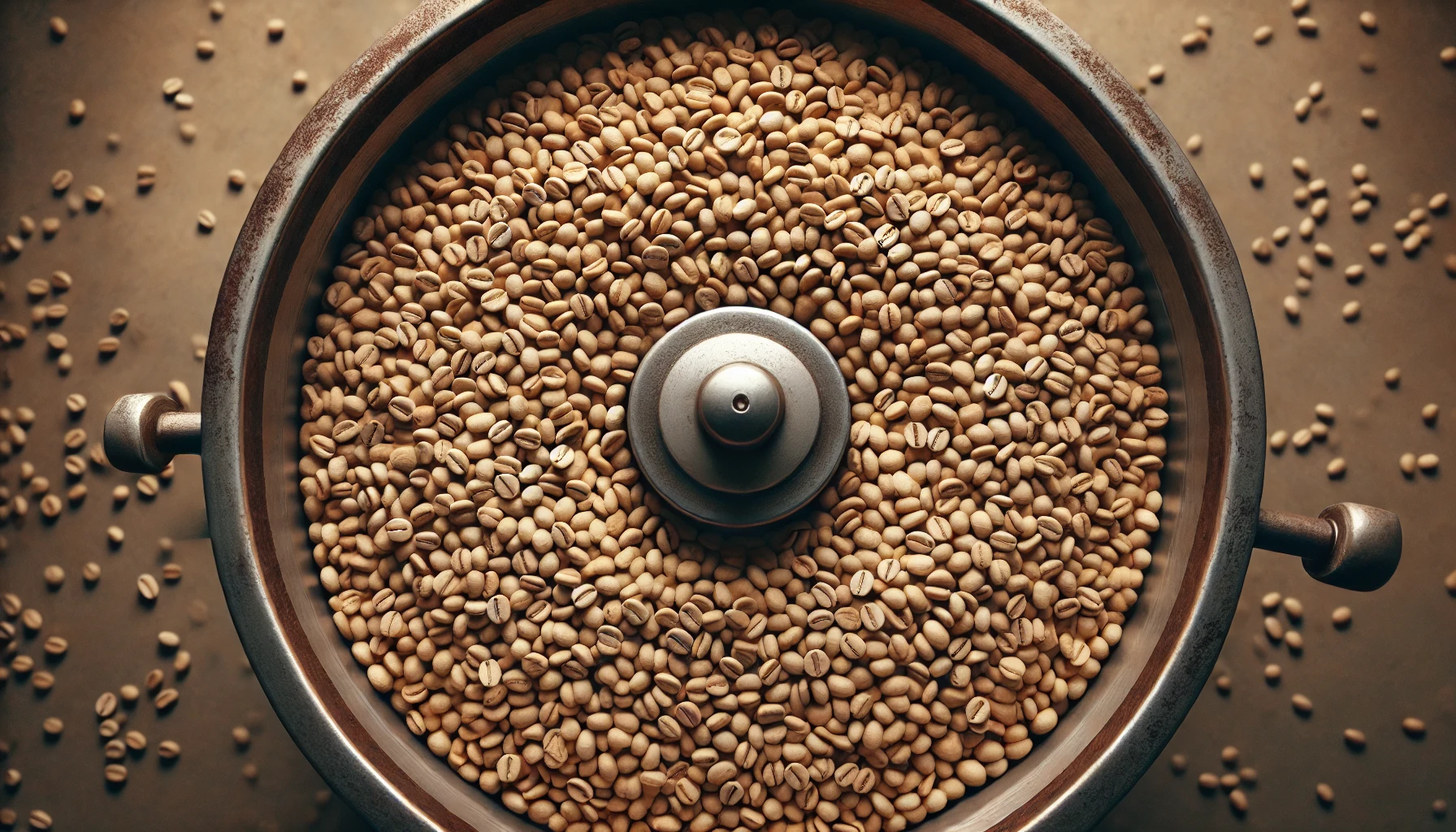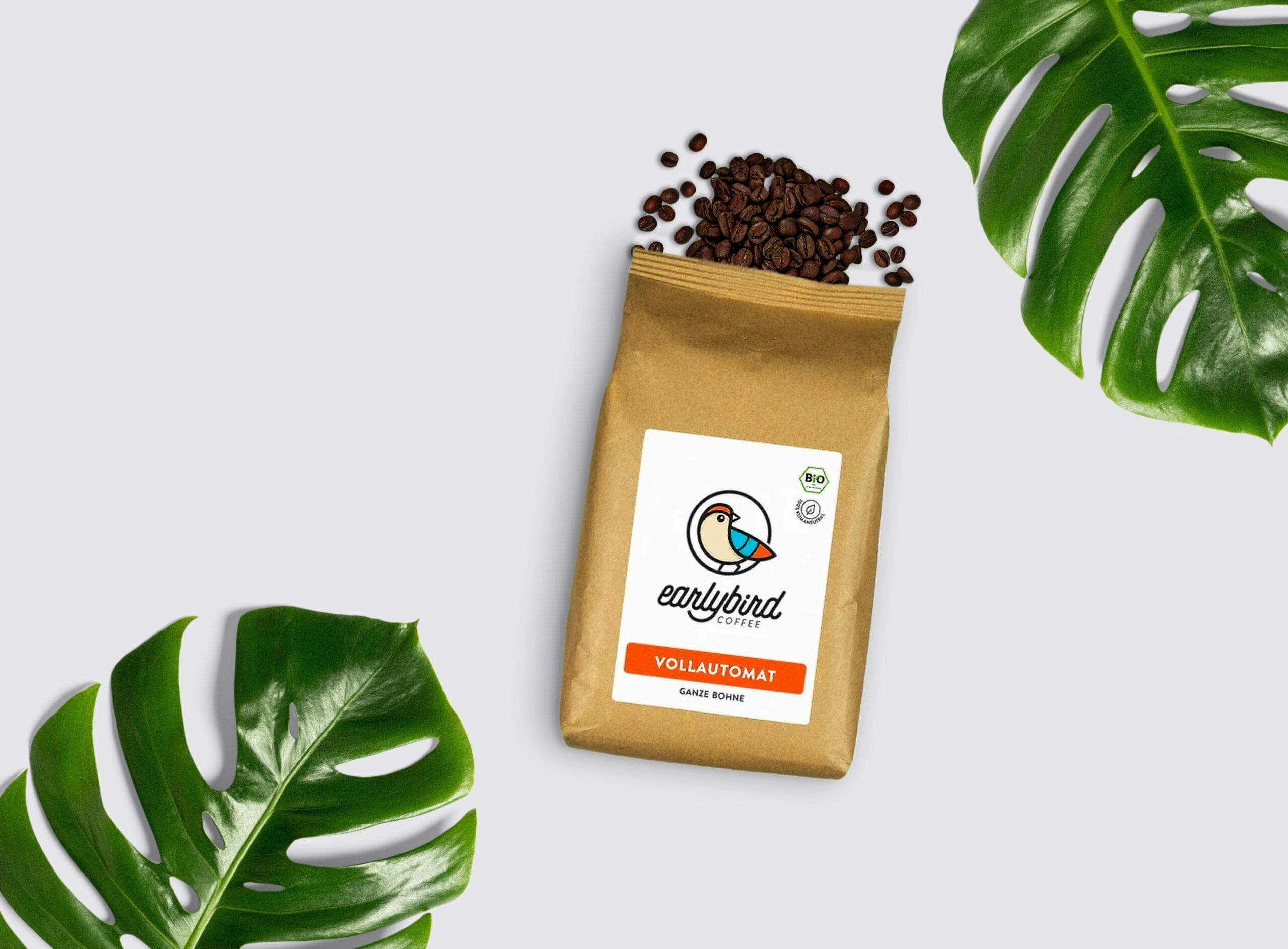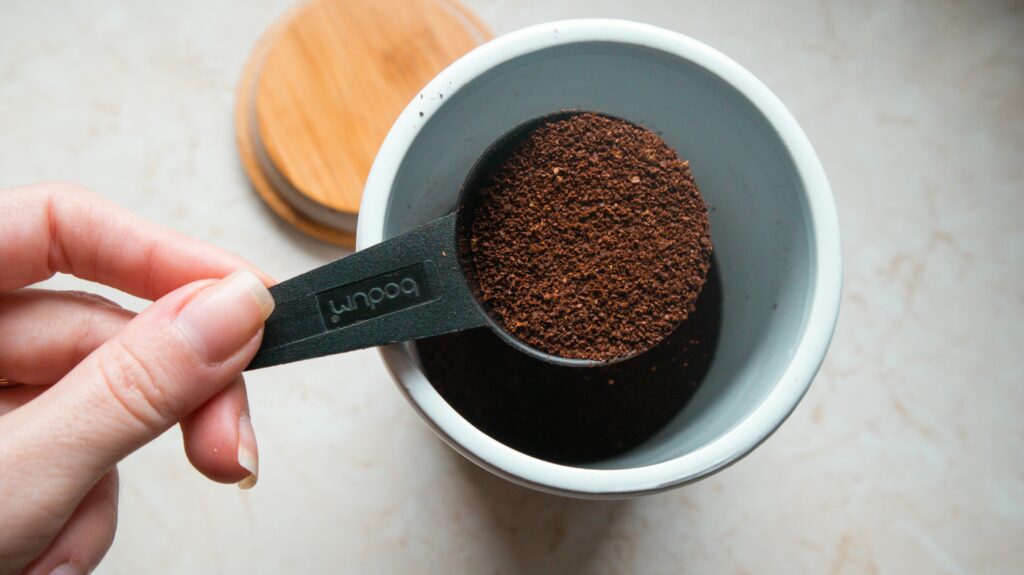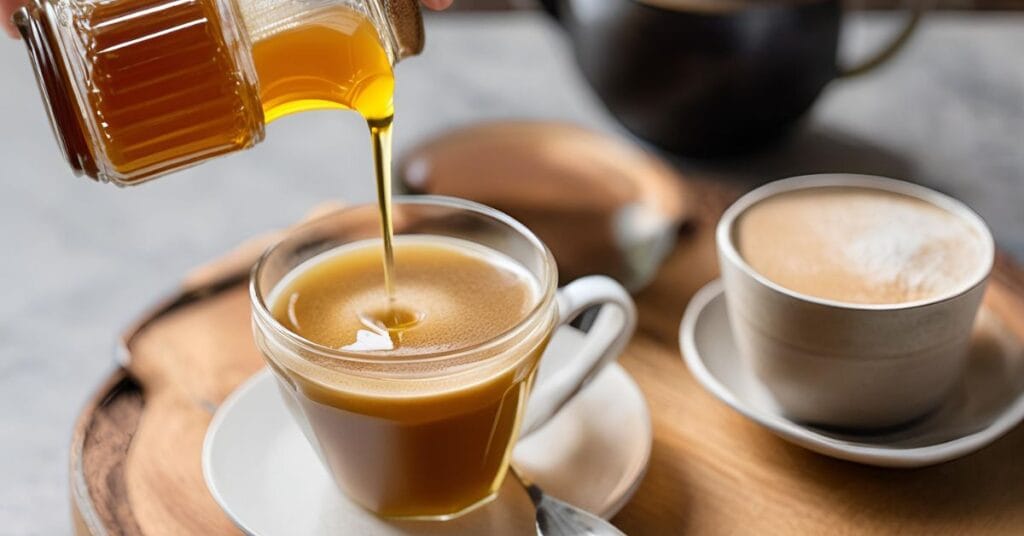The shape of coffee beans can tell you a lot about the bean variety, roasting properties, and the resulting flavor profile. Each coffee bean shapes is linked to specific characteristics, such as density and heat retention, that significantly impact the taste of your coffee. In this article, we’ll delve into how the shape of different types of coffee beans plays a role in defining their flavor, quality, and the overall coffee experience.
Table of Contents
ToggleWhat is Coffee Bean Shapes?
Definition
Coffee bean shapes refers to the physical appearance of coffee beans, which can vary widely depending on the coffee species, the growing environment, and genetic factors. The shape of coffee beans impacts how they are roasted, how they react to heat, and ultimately the flavor of the final brew. Different coffee varieties—such as Arabica, Robusta, Peaberry, and Excelsa—have distinct bean shapes that give them unique roasting properties and flavor characteristics.
Key Points About Kimbo Coffee:
Founded: 1963 by the Rubino brothers in Naples, Italy.
Beans Used: Blend of Arabica and Robusta beans.
Roasting Process: Slow roasting to enhance depth of flavor.
Reputation: Known for rich, bold flavors and strong ties to traditional Neapolitan coffee culture.
| Feature | Details |
|---|---|
| Founded | 1963, Naples, Italy |
| Bean Types | Arabica and Robusta |
| Roast Type | Slow, traditional roasting for a full-bodied, aromatic flavor |
| Popular Blends | Kimbo Espresso Napoletano, Kimbo Aroma Gold, Kimbo Extreme |
| Availability | Available internationally, including specialty stores and online platforms |

The shape of coffee beans varies based on their species, growth conditions, and genetic traits. Here are some of the most common coffee bean shapes and the roles they play in producing your favorite cup.
1.1 Arabica Beans
Arabica coffee beans are oval and elongated. They have a distinct curved line (sulcus) running down the middle and tend to be larger compared to other coffee bean types. This shape is a result of the conditions in which Arabica plants thrive—high altitudes, cooler temperatures, and less dense growth patterns.
Shape Characteristics:
Oval, elongated form
Pronounced curved line or sulcus
Generally larger size compared to other varieties
Flavor Impact: The shape allows for gradual roasting, preserving floral and fruity notes, which makes Arabica beans sweet and delicate in flavor.
1.2 Robusta Beans
Robusta coffee beans are smaller, denser, and rounder, with a straighter center line. These characteristics contribute to their robust flavor and higher caffeine content, giving them an intense taste often associated with bitterness.
Shape Characteristics:
Rounder, smaller form
Straighter center line
Denser structure
Flavor Impact: The round and compact shape allows Robusta beans to withstand higher roasting temperatures, leading to a bolder, more bitter flavor profile. This makes them ideal for espresso blends or instant coffee.
1.3 Peaberry Beans
Peaberry beans are unique because they grow alone inside the coffee cherry, instead of in pairs like typical coffee beans. This results in a smaller, rounder bean that many believe to be more uniform, making for an even roast.
Shape Characteristics:
Small, round shape
Single bean per cherry instead of the usual two
Flavor Impact: The unique shape and size of peaberry beans provide a bright, fruity flavor with enhanced complexity, and they often have a higher sweetness level.
1.4 Excelsa Coffee Beans
Excelsa beans are primarily grown in Southeast Asia and are known for their tart, fruity taste combined with floral notes. Excelsa beans are often confused with Liberica due to their similar almond-like shape but offer a distinct flavor that is lighter in aroma yet complex in taste.
Shape Characteristics:
Tapered, almond-like shape
Similar in appearance to Liberica beans, but typically smaller
Flavor Impact: Excelsa beans are valued for their unique blend of light and dark roast characteristics, giving a complex flavor profile that includes tartness and fruity notes. These beans are often used in blends to enhance the overall depth of flavor. Peaberry beans are unique because they grow alone inside the coffee cherry, instead of in pairs like typical coffee beans. This results in a smaller, rounder bean that many believe to be more uniform, making for an even roast.
How Bean Shape Affects Roasting

The shape of coffee beans influences how they react during roasting, affecting how evenly they roast and ultimately their flavor.
2.1 Heat Distribution
Arabica Beans: Due to their larger and more elongated shape, Arabica beans require careful roasting to ensure even heat distribution. If not handled properly, some parts of the bean may roast faster than others, leading to uneven flavors.
Robusta Beans: Their round shape allows Robusta beans to roast more uniformly, even at higher temperatures, contributing to their bold flavor.
Peaberry Beans: The round shape helps peaberry beans roll more freely in the roasting drum, allowing them to roast evenly, which results in a bright and balanced flavor.
2.2 Influence on Roasting Profiles
Arabica: Lower temperature for a longer time helps preserve floral notes.
Robusta: Higher roasting temperature to enhance earthy and bitter flavors.
Peaberry: Medium-high temperature for even, complex development.
Impact of Bean Shape on Flavor
The shape of the coffee bean affects how heat penetrates it during roasting, which in turn influences its flavor profile.
| Bean Type | Shape Description | Flavor Profile | Roasting Characteristics |
| Arabica | Oval, flat with sulcus | Floral, fruity, acidic | Needs careful roasting for evenness |
| Robusta | Rounder, smaller | Earthy, nutty, bitter | Handles higher roasting temperatures |
| Peaberry | Small, round | Bright, sweet, complex | Rolls well, leading to even roasting |
| Excelsa | Tapered, almond-shaped | Tart, fruity, floral | Unique roasting method to preserve light and dark notes |
Choosing Coffee Based on Bean Shape
While the shape may not be the first thing you look at when buying coffee, understanding its importance can help you make more informed choices:
For Delicate Flavors: Go for Arabica beans for a sweet and floral cup.
For a Stronger Kick: Robusta beans offer a more intense flavor and higher caffeine content.
For a Unique Experience: Liberica or Excelsa beans provide distinctive flavor profiles that stand out from the usual coffee offerings.
The Role of Bean Shape in Brewing
The bean shape also impacts how coffee beans interact during brewing. For example, Arabica beans with their flat surface often result in slower water penetration, making them ideal for pour-over methods, which require even extraction. On the other hand, Robusta beans, with their rounder and denser form, are better suited for espresso brewing due to their bold flavor and higher caffeine content.
Genetic Influence on Bean Shape
The shape of coffee beans is largely determined by their genetic makeup. Arabica beans are genetically distinct from Robusta, which accounts for the differences in shape, size, and even the internal cell structure of the beans. The genetics of Liberica and Excelsa also play a role in their unique shapes and the distinctive flavor profiles they develop.
Choosing Coffee Beans by Region
Different regions produce coffee beans with distinct shapes and flavors, influenced by altitude, soil type, and climate. Understanding the region of origin can help in choosing a bean shape that fits your flavor preferences:
Ethiopia: Known for Arabica beans with a delicate, floral flavor.
Vietnam: Major producer of Robusta beans that offer bold, intense flavor.
Indonesia: Home to Liberica and Excelsa beans with smoky and fruity characteristics.
Tanzania: Famous for Peaberry beans with bright acidity and complexity.
The Influence of Bean Shape on Brewing Techniques
Bean shape also affects the best brewing methods for each type:
Arabica Beans: Best suited for pour-over and drip coffee methods that emphasize their delicate flavors.
Robusta Beans: Ideal for espresso and French press due to their bold profile and dense structure.
Peaberry Beans: Shine in Aeropress or pour-over methods, as their even roasting enhances the complexity.
Excelsa Beans: Work well in cold brew for a unique blend of tart and floral notes.
FAQs About Coffee Bean Shapes
What are the main differences in coffee bean shapes?
Arabica beans are oval and flat, while Robusta beans are rounder and smaller. Peaberry beans are single, round beans rather than the usual pair, and Liberica beans are irregularly shaped and larger than the others.
How does the shape of a coffee bean affect its flavor?
The shape affects how evenly the bean roasts and therefore its flavor profile. Arabica beans often have a complex, nuanced flavor, while Robusta beans tend to be bolder and more bitter due to their denser, round shape.
Which coffee bean shapes is best for espresso?
Robusta beans are well-suited for espresso due to their higher caffeine content and bold flavor. Their round shape also allows for more consistent roasting at higher temperatures, ideal for espresso blends.
What is the difference between peaberry and regular coffee beans?
Peaberry beans grow alone inside the coffee cherry, making them rounder and smaller than regular coffee beans, which grow in pairs. This unique shape allows them to roast more evenly, resulting in a brighter and more balanced flavor.
Why are Liberica beans less common than Arabica and Robusta?
Liberica beans are less common due to their irregular shape and larger size, making them harder to process. They are mostly grown in Southeast Asia, and their unique flavor profile is not as universally preferred as that of Arabica or Robusta.
Which coffee bean shapes produces the smoothest flavor?
Arabica beans are generally considered to produce the smoothest flavor due to their shape, which allows for an even, controlled roasting process that brings out floral and fruity notes.
Conclusion
Understanding the shape of coffee beans can provide valuable insights into their roasting properties and flavor profiles. Whether you prefer the subtle complexity of Arabica, the intense boldness of Robusta, or the unique flavors of Peaberry and Excelsa, the shape of each bean contributes to what makes coffee an incredibly diverse and enjoyable drink. Remember to choose based on your flavor preferences and the brewing method that best suits the coffee bean shapes.
Disclaimer
The information provided in this article is intended for educational purposes. Individual flavor preferences and roasting experiences may vary. Always consult coffee experts or roasters for specific recommendations suited to your taste.
We Value Your Feedback
We would love to hear from you! What is your favorite type of coffee bean shapes, and how does it impact your brewing experience? Your feedback helps us improve and provide more valuable information to coffee enthusiasts like you.











































